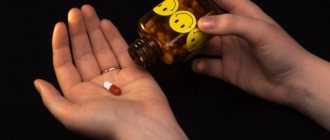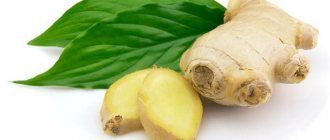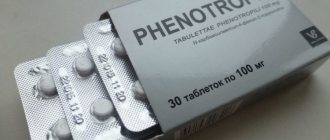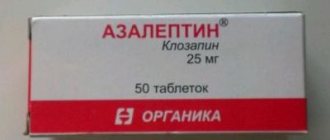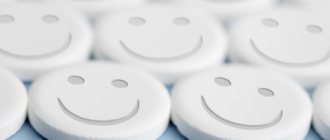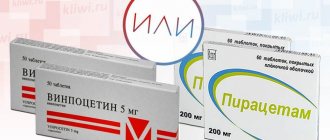NEUROPROTECTORS[edit | edit code]
Yuzhakov Anton NOOOTROPICS
Neuroprotectors
- these are drugs that prevent damage to brain neurons caused by the action of a pathogenic factor.
Their influence is aimed at eliminating or reducing pathophysiological and biochemical disorders in the nerve cell. cerebroprotectors
is also common . These are drugs that protect, improve, and adapt brain structures to negative influences.
The search for neuroprotectors began in the 70s of the 20th century, and since then the scope of application of pharmacological agents of this group has been steadily expanding.
The administration of neuroprotectors is one of the most effective methods of treating patients with cerebrovascular insufficiency and helps prevent the development of severe and irreversible damage to neurons.
The main method of treating cerebrovascular disorders are neuroprotectors that affect cerebral metabolism and normalization of blood supply to the brain with the help of vasoactive drugs and drugs that affect blood clotting.
The group of neuroprotectors includes drugs with different structures and mechanisms of action, which are classified as follows.
1. Nootropic drugs - piracetam (nootropil), Cerebrolysin, Semax, picamilon, etc.
2. Antioxidants
2.1. Derivatives of 3-hydroxypyridine - mexidol, mexicor, emoxypine, etc.
2.2. Phenolic compounds - a-tocopherol acetate, bioflavonoids (vitamin P - rutin, quercetin, corvitin, flakumin), etc.
2.3. Carboxylic acids - ascorbic acid, etc.
2.4. Amino acids - glutamine and lipoic acids, glycine, etc.
2.5. Derivatives of nicotinic acid - xanthinol nicotinate (complamin), niacin.
2.6. Thiol compounds - thiotriazoline.
2.7. Combined vitamin preparations - ascorutin, aevit, neurovitan, neuron, neuronorm, neurorubin, etc.
3. Drugs that improve cerebral circulation (vasoactive)
3.1. Antiplatelet agents - acetylsalicylic acid (aspirin), clopidogrel (Plavika), ticlopidine (Tiklid).
3.2. Anticoagulants - heparin, syncumar, warfarin, phenylin.
3.3. Calcium channel blockers - cinnarizine (Stugeron), nimodipine (Nimoton).
3.4. Derivatives of alkaloids of the uterine horns - nicergoline (sermion).
3.5. Derivatives of vinca alkaloids - vinpocetine (Cavinton), vincamine (oxybral).
3.6. Methylxanthines - pentoxifylline (trental, agapurine), xanthinol nicotinate (complamin).
4. Combined drugs - fezam, thiocetam.
5. Adaptogens - tincture and liquid extract of ginseng, eleutherococcus, Chinese magnolia vine, etc.
6. Others - naftidrofuryl (enalben, naftilux), ginkgo biloba (tanakan, memoplant, bilobil), instenon (a combination of etamivan with etophylline and hexobendine), vasobral (a combination of dihydroergocryptine with caffeine), memantine (akatinol memantine), neuromidin (amiridine, ipidacrine ), riluzole (Rilutek).
The mechanisms of neuroprotection (cerebroprotection) can be carried out through numerous metabolic pathways, including:
- reduction of energy costs, oxygen requirements of brain tissue, restoration of energy resources;
- antioxidant reactions;
- antagonism towards glutamate receptors, inhibition of synthesis and presynaptic release of glutamate;
- agonistic effect with GAM K, glycine;
- antagonistic relationship to voltage-dependent Ca2 channels;
- modulation of neuronal NO synthase;
- blockade of cholinesterase and K channels;
- angioprotection;
- increasing resistance to hypoxia.
Anesthetics and their description
For the purpose of general anesthesia, that is, directly for anesthesia or general anesthesia, various drugs are used in modern anesthesiology. Depending on their physical and chemical properties, as well as methods of application, they are divided into inhalation and non-inhalation drugs.
Medicines for inhalation anesthesia include a number of easily evaporating liquids in the form of a substance called “fluorothane” and gaseous elements, mainly nitrous oxide. Due to their good anesthetic properties and safety, fluorinated hydrocarbons, especially fluorothane, are widely used in anesthesiological practice, displacing the previously used cyclopropane. Chloroform has lost its importance as a substance for anesthesia. Substances include barbiturates in the form of sodium thiopental and non-barbiturates such as ketamine hydrochloride and propanidide.
For immersion in anesthesia, non-inhalation narcotic neurotropic drugs of peripheral action are often used, which are administered intravenously or intramuscularly. Basic anesthesia is carried out with inhalation or non-inhalation drugs. Basic anesthesia can be single-component or multi-component. Induction of anesthesia is carried out with special concentrations of drugs, for example, using nitrous oxide mixed with oxygen.
In preparation for the operation, a premedication procedure is carried out, which includes prescribing analgesic, sedative, anticholinergic and other drugs to the patient. Such drugs are used to reduce the negative impact of emotional stress on the body, which usually precedes surgery. Thanks to these medications, it is possible to prevent possible side effects that are associated with anesthesia and surgery, we are talking about reflex reactions, hemodynamic disorders, increased secretion of the glands of the respiratory tract, and the like. Premedication helps facilitate anesthesia. Thanks to premedication, the concentration of the substance used for anesthesia decreases, and at the same time the excitation phase is less pronounced.
Anesthetics currently used include drugs in the form of “Ketalar”, “Narcotan”, “Recofol”, “Thiopental”, “Urethane”, “Chloroform” and others.
Neuroleptics also belong to neurotropic drugs.
Nootropic drugs[edit | edit code]
Piracetam
Cerebrolysin
Semax
Picamilon
(sodium salt of N-nicotinol-y-aminobutyric acid) is quickly absorbed in the digestive canal, easily penetrates the blood-brain barrier, distributed in the brain, muscles and adipose tissue, and excreted unchanged in the urine.
The presence of GAM K and nicotinic acid in the chemical structure of picamilon determines its nootropic and vasoactive effect. It improves cerebral circulation and has a positive effect on the metabolism of brain tissue. The drug also has antihypoxic, antioxidant and antiplatelet effects, has a tranquilizing effect, not accompanied by central nervous system depression, drowsiness, lethargy, and muscle relaxation. Picamilon exhibits a psychostimulating effect, restores physical and mental performance in case of overwork, after psycho-emotional stress.
The mechanism of action of picamilon is due to its interaction with GABA receptors.
Indications for use:
cerebrovascular accidents, migraine, neurotic and neurosis-like conditions, asthenia, depression; is prescribed to restore performance after hard work in extreme conditions, to increase resistance to physical and mental stress. In sports medicine it is used to increase the body's resistance to increased stress.
Side effects:
allergic reactions, headache, dizziness, anxiety.
Classification
Neurotropic drugs include anxiolytics along with antidepressants, local irritants, anesthetics, anesthetic drugs, neuroleptics, nootropics, tonic medications and adaptogens. In addition, this category of drugs includes antiparkinsonian and antiepileptic drugs, hypnotics and sedatives, as well as drugs that affect neuromuscular transmission. Let's look at these categories separately and start with anxiolytics.
Let's take a closer look at the classification of neurotropic drugs.
Antioxidants[edit | edit code]
The use of antioxidants as neuroprotectors is based on inhibition of reactions of non-enzymatic free radical oxidation of lipids and biopolymers, proteins, mucopolysaccharides and nucleic acids with subsequent membrane protective action, which ensures stabilization of the structural integrity and preservation of the functional properties of neurons.
Mexidol
(2-ethyl-6-methyl-3-hydroxypyridine succinate) is a derivative of 3-hydroxypyridine; its chemical structure is an analogue of pyridoxine, the phosphorylated form of which has neurotropic, antioxidant and energizing effects.
Emoxipin
- a synthetic antioxidant, in chemical structure, like Mexidol, belongs to the group of 3-hydroxypyridines. Unlike Mexidol, it has a less pronounced antihypoxic effect and also has angioprotective and antiaggregation properties. Inhibits free radical oxidation of biomembranes, increases the activity of antioxidant enzymes and stabilizes membrane structures of cells (erythrocytes, platelets). Slows down the free radical stages of prostaglandin synthesis catalyzed by cyclooxygenase and lipoxygenase and thus reduces the formation of thromboxane A and leukotrienes (LTV4, etc.), prevents platelet aggregation and the development of thromonecrotic outcomes of ischemic disease of the brain (stroke) and heart (myocardial infarction). Reduces the cholesterol/phospholipid ratio, thereby reducing the viscosity of the lipid layer of membranes.
Indications for use:
ischemic and hemorrhagic cerebrovascular accidents, myocardial infarction, skin diseases, glaucoma and other diseases accompanied by activation of lipid peroxidation processes. In ophthalmology it is used in the treatment of intraocular hemorrhages, angioretinopathy of various etiologies, including diabetic, for the protection and treatment of the cornea and retina when exposed to high intensity light.
Side effects:
agitation, drowsiness, moderate increase in blood pressure, skin rash, in the treatment of eye diseases - burning sensation, pain, itching, redness at the injection site.
Vitamin neuroprotectors with antioxidant action (Vit. E, C, P, etc.) are presented in the corresponding section.
Glutamic acid, glycine, lipoic acid
increase the level of total and reduced glutathione. Glutamic acid has a neurotransmitter effect, stimulates redox processes, participates in protein and carbohydrate metabolism, promotes the neutralization and elimination of ammonia, increases tissue resistance to hypoxia, stimulates the synthesis of acetylcholine and ATP, and improves the process of transmission of excitation to the central nervous system.
Indications for use:
epilepsy, psychosis, reactive depression, exhaustion. In sports medicine, it can help increase tissue resistance to hypoxia during the recovery period.
Side effects
: possible increased excitability, vomiting, diarrhea, anemia, leukopenia.
Glycine
(glycesed-CMP) is an inhibitory neurotransmitter, a regulator of metabolic processes in the central nervous system, reduces psycho-emotional stress, restores mental performance, has a neuroprotective, anti-stress, sedative effect, improves metabolic processes in brain tissue, helps neutralize toxic products of ethyl alcohol oxidation, reduces the severity of asthenic syndrome, reduces pathological craving for alcohol.
Indications for use:
asthenic condition, vegetative-vascular dystonia; used to increase mental performance, with psycho-emotional stress, various functional and organic diseases of the nervous system. Can be used in sports medicine: during the preparatory period to relieve psychomotor agitation.
Side effects:
allergic reactions.
Lipoic acid also regulates lipid metabolism.
Xanthinol nicotinate
(complamin) is a derivative of theophylline and nicotinic acid and combines their properties. The drug improves cerebral circulation, oxygenation of brain tissue, microcirculation, reduces platelet aggregation, blood viscosity, and activates fibrinolysis.
The mechanism of action of complamin is due to inhibition of phosphodiesterase and accumulation of cAMP. With long-term use, the drug reduces the level of cholesterol, low and very low density lipoproteins and has an anti-atherosclerotic effect, which enhances its cerebroprotective properties.
The drug belongs to indirect antioxidants, increases the level of antioxidant activity of tissues, acts as a precursor of pyridine nucleotides, improves peripheral circulation, participates in oxidative decarboxylation, activates lipid and carbohydrate metabolism, has an antioxidant, hypolipidemic effect, improves liver function, and has a detoxifying effect in case of intoxication.
Indications for use:
atherosclerosis, neuropathy, intoxication, hepatitis, liver cirrhosis, cerebrovascular accidents. In sports medicine, it is mainly used to improve microcirculatory processes and, accordingly, blood supply and oxygenation of tissues.
Side effects:
allergic reactions, dyspeptic disorders, decreased blood pressure, weakness, dizziness, flushing of the face and neck.
To normalize blood circulation in the brain, drugs are used that improve the rheological properties of blood and have a vasodilating effect, which leads to the saturation of brain tissue with oxygen and the elimination of ischemia.
Acetylsalicylic acid
in low doses it has an antiplatelet effect, the main mechanism of which is the inactivation of the enzyme cyclooxygenase-2. This leads to disruption of the synthesis of thromboxane A2 in platelets and a decrease in platelet aggregation. The drug also exhibits indirect anticoagulant properties (impairs the activation of coagulation factors in the liver - II, VII, IX, X) and inhibits the activity of plasminogen. It is effective for arterial thrombosis, since blood clots with a low fibrin content and a large number of platelets form in the arteries.
Acetylsalicylic acid is used for the prevention of cerebrovascular accidents and stroke, coronary artery thrombosis, for the treatment of angina pectoris, myocardial infarction. Prophylactic dose - 100-300 mg per day"1. The drug should not be used if there is a history of erosive gastritis or peptic ulcer, since long-term use can cause gastric bleeding.
An alternative to aspirin are thienopyridine derivatives - clopidogrel (Plavike) and ticlopidine (Tiklid), they are used in cases where it is impossible or ineffective to use aspirin. Currently, clopidogrel is prescribed in combination with aspirin. Combination therapy is more effective compared to monotherapy (aspirin).
Heparin
- a direct anticoagulant, which is explained by the ability of its high-molecular chains to inhibit the key blood clotting enzyme - thrombin. The drug is considered as an indirect inhibitor, since in order to carry out its anticoagulant effect it requires a coenzyme - antithrombin III. By binding to antithrombin III in the blood plasma and changing the conformation of its molecule, heparin significantly accelerates the initially slow binding of antithrombin III to the active centers of the blood coagulation factors (IXa, XIa, XI 1a, kallikrein and especially thrombin and factor Xa) and, as a consequence, their inactivation (inhibition of thrombus formation). In this case, to inactivate thrombin, it is necessary to bind heparin simultaneously with antithrombin III and thrombin itself (the formation of such a complex is possible only if the heparin molecule contains at least 18 pentasaccharide residues).
On the contrary, when factor Xa is inactivated, heparin only interacts with antithrombin III, i.e., the number of pentasaccharide residues in the molecule does not significantly affect its ability to accelerate it. It also forms a complex with antiplasmin and thus increases the activity of the fibrinolytic system and prevents platelet adhesion and aggregation.
Sinkumar
,
warfarin
,
phenylin
- indirect anticoagulants, antagonists of vitamin K, necessary for the formation of prothrombin in the liver. The drugs disrupt the biosynthesis of prothrombin, proconvertin (factor VII) and other blood coagulation factors (IX, X), and enhance prostacyclin-synthesizing activity in the walls of blood vessels. Unlike heparin, they act slowly and for a long time, and have a cumulative effect.
Indirect anticoagulants are used as neuroprotectors, for the prevention and treatment of venous thrombosis and embolism, and in the thrombotic form of ischemic stroke.
Cinnarizine
(stugeron) - N-benzhydryl-N-trans-cinnaluyl-piperazine) is a derivative of piperazine.
Pharmacokinetics.
Well absorbed in the intestines. After oral administration, the maximum concentration in plasma is observed after 1-3 hours. In the blood, the drug binds to plasma proteins (up to 91% of the administered dose). Cinnarizine is completely biotransformed and excreted in the form of metabolites in feces (2/3) and urine (1/3).
Pharmacodynamics.
Cinnarizine improves blood circulation in the brain, coronary and peripheral circulation, has a high affinity for cerebral vessels, reduces their spasm, the response to pressor substances (norepinephrine, angiotensin, prostaglandins F2a, etc.), reducing platelet aggregation and blood viscosity, improves microcirculation and increases tissue resistance to hypoxia.
The mechanism of the vasodilator effect of the drug is associated with the blockade of Ca2~ entry through slow calcium channels and smooth muscle cells of the vascular wall. Cinnarizine is a selective type IV calcium channel blocker.
The tone of vascular smooth muscles mainly depends on the concentration of cytoplasmic Ca2. In ischemia, hypoxia and other pathological conditions, an increased concentration of Ca2* can lead to spasm of the smooth muscles of the vascular wall, increased tissue demand for oxygen, a significant increase in cellular metabolism, increased platelet aggregation, and various destructive processes. Therefore, in the treatment of cerebral ischemia, calcium antagonists with selective cerebrovascular action, such as cinnarizine, as well as nimodipine, etc., are important.
Indications for use:
treatment and prevention of cerebral circulatory disorders associated with traumatic brain injury, atherosclerosis and cerebral vasospasm, hypertension, migraine, sea and air sickness; peripheral circulatory disorders; allergic diseases.
Side effects:
dry mouth, dyspepsia, in case of overdose - drowsiness, allergic skin reactions.
Flunarizine
has greater (compared to cinnarizine) vasodilating activity in relation to cerebral vessels.
In the practice of sports training, these drugs are used during the preparatory and competitive periods specifically to improve cerebral circulation and metabolic processes, especially in representatives of complex coordination sports.
Nimodipine
(nimotope) chemical structure is 2,6-dimethyl-4-(3-nitrophenyl)-1,4-dihydro-3,5-pyridine dicarboxylic acid methoxyethyl isopropyl diester.
Pharmacokinetics.
After oral administration, 50% of the drug is adsorbed in the digestive canal. It has low bioavailability, which is due to its intensive metabolism during the first passage through the liver. The maximum concentration of nimodipine in blood plasma is observed after 0.6-1.6 hours. The drug has high lipophilicity and penetrates well through the blood-brain barrier.
Pharmacodynamics.
A feature of the action of nimodipine is its selective effect on cerebral vessels. It prevents or eliminates vascular spasm, improves cerebral circulation and the functional state of brain neurons, and increases the resistance of brain cells to ischemia. The drug improves memory and the ability to concentrate.
The mechanism of action of nimodipine is a selective interaction with L-type calcium channels and blockade of Ca2+ transport into vascular smooth muscle cells.
Indications for use:
spasm of cerebral vessels, ischemic disorders of cerebral circulation (memory impairment, decreased intellectual abilities, difficulty concentrating).
Side effects:
a sharp decrease in blood pressure, peripheral edema, facial hyperemia, bradycardia, gastrointestinal upset, increased excitability of the central nervous system or depression.
Due to the large number of side effects, it is rare in sports training regimens.
‘Nicergoline
(sermion) is a structural analogue of ergot alkaloids, containing a nicotinic acid residue.
Pharmacokinetics
. After oral administration, it is well absorbed from the gastrointestinal tract. In the blood, 90% of the drug binds to plasma proteins; in the liver it undergoes biotransformation with the formation of two metabolites. It is excreted mainly in urine and slightly in bile.
Pharmacodynamics
. Dilates brain vessels, improves cerebral blood flow. Increases the utilization of oxygen and glucose by brain cells, has a positive effect on the bioelectrical activity of the brain. Shows antispasmodic effect on peripheral vessels. The drug improves the rheological properties of blood and has an antiplatelet effect.
The mechanism of the vasodilatory action of nicergoline is due to the α-adrenergic blocking effect and blockade of calcium channels.
Indications for use:
disorders of cerebral and peripheral circulation, age-related impairments of intellectual activity, memory loss.
Side effects:
decreased blood pressure, dizziness, drowsiness or insomnia, flushing of the skin of the face and upper half of the body, dysfunction of the digestive canal.
Neuroprotectors based on the small periwinkle plant (Vinca minor L. and Vinca erecta Rgl. et Schmalth) include vinpocetine (Cavinton), oxybral (vincamine).
Vinpocetine
(cavinton) - ethyl ester of apovincamic acid is a semi-synthetic derivative of the alkaloid devincane.
Pharmacokinetics
. When taking the drug orally, the maximum concentration is observed after 60 minutes, bioavailability is 70%. The half-life after oral administration is 4.8 hours.
Pharmacodynamics
. Cavinton dilates blood vessels in the brain, improves cerebral circulation and oxygen supply to the brain. It does not cause the phenomenon of “stealing”; when it is used, the blood supply to the intact area of the brain does not change. Improves microcirculation, increases the elasticity and ability of red blood cells to deform, reduces increased blood viscosity mainly due to the erythrocyte link, eliminates hypoxia. The drug improves metabolic processes in brain tissue by enhancing the oxidation of glucose, thereby increasing energy production and increasing the overall activity of the body.
The mechanism of action of Cavinton is due to the inhibition of phosphodiesterase, an enzyme that catalyzes the conversion of ATP to cAMP. As a result of the action of the drug, it leads to the accumulation of cAMP in tissues, causes cerebral vasodilation, and reduces platelet aggregation.
Indications for use:
disorders of cerebral circulation of various etiologies (after stroke, trauma, infectious diseases, intoxications), accompanied by mental disorders (memory impairment, headache, dizziness, aphasia, apraxia, movement disorders), atherosclerotic damage to the blood vessels of the eyes, auditory and vestibular analyzers.
Side effects:
decreased blood pressure, tachycardia, extrasystole.
Oxybral
- a preparation of the alkaloid vincamine, also of plant origin.
Pharmacokinetics
. Oxybral is quickly absorbed from the gastrointestinal tract and enters the blood, where 64% of it binds to blood plasma proteins. It undergoes almost complete biotransformation in the liver. Metabolites and a small amount (4-6%) unchanged are excreted by the kidneys. The half-life is 60-90 minutes.
Pharmacodynamics
. Oksibral combines nootropic, vasoactive and metabolic effects, has a selective effect on brain vessels, improves cerebral circulation, increases oxygen supply to neurons, reducing hypoxia. The drug promotes glucose utilization and energy production, improves brain activity. The mechanism of vasodilatory action is similar to that of vinpocetine.
Indications for use:
disorders of cerebral circulation (memory impairment, impaired concentration, condition after a stroke, traumatic brain injury, impaired orientation in time and space), to improve intellectual abilities. Application in the practice of sports training: to improve the regulation and maintenance of brain functions in cases where increased concentration and speed of psychomotor reactions are required (complex sports, martial arts, sports games).
Side effects:
allergic reactions.
Pentoxifylline
(trental) is a derivative of methyl xanthine.
Pharmacokinetics
. The drug is almost completely absorbed from the gastrointestinal tract. Its maximum concentration in the blood is observed after 1 hour. It undergoes biotransformation in the liver with the formation of an active metabolite; The half-life is 1.6 hours. It is excreted mainly by the kidneys in the form of metabolites, less than 4% of the administered dose is excreted in the feces.
Pharmacodynamics
. Improves microcirculation, rheological properties of blood and supply of tissues, most notably the brain and limbs, with oxygen, which is facilitated by the presence of Trental's vasodilating effect and positive inotropic effect. Inhibits platelet and erythrocyte aggregation, enhances fibrinolysis and thereby has a positive effect on the rheological properties of blood.
The mechanism of action of pentoxifylline is similar to that of Cavinton and is caused by inhibition of the activity of the phosphodiesterase enzyme and the accumulation of cAMP in vascular smooth muscle cells, blood cells, as well as in the brain and other tissues.
Indications for use:
disorders of cerebral and peripheral circulation of atherosclerotic and spastic origin, vascular diseases of the organs of vision and hearing.
Side effects:
dysfunction of the gastrointestinal tract, facial redness, feeling of heat, tachycardia, decreased blood pressure.
Combination drugs combine metabolic and vasoactive properties, which makes it possible to achieve the best effect in a shorter time and reduce the dose of active substances compared to their separate use.
Fezam
- a combination drug containing piracetam and cinnarizine in one capsule. Improves cerebral metabolism and cerebral circulation, has a pronounced effect on hypoxia of brain tissue. Due to the presence of cinnarizine in the composition, the drug has a sedative effect; the therapeutic effect appears after long-term use (not earlier than the end of the third week).
Indications for use:
cerebrovascular accident, memory impairment, mental function and concentration, encephalopathy, Meniere's syndrome, migraine prevention. Fezam is recommended in cases where the use of piracetam alone causes anxiety and insomnia in patients.
Side effects:
hypersensitivity, skin rashes, photosensitivity.
Thiocetam
- a combined neuroprotector containing piracetam and thiotriazoline, which exhibit a mutually potentiating effect. The drug has cerebroprotective and nootropic properties, has antihypoxic, antioxidant and membrane-stabilizing effects, due to piracetam it promotes the learning process and improves memory.
The cerebroprotective effect of thiotriazoline is due to its anti-ischemic, membrane-stabilizing and antioxidant effects, and the ability to improve the rheological properties of blood.
Indications for use:
disorders of blood circulation and metabolic processes in the brain of various origins, including against the background of cardiovascular pathology (chronic ischemic heart disease, myocardial infarction), liver diseases (chronic hepatitis, cirrhosis), viral infections, which is due to the cardioprotective, hespatoprotective and immunomodulatory effects of thiotriazoline .
Side effects:
possible agitation, tremor, sleep disturbance or drowsiness, dizziness, dyspepsia, which is associated with the influence of piracetam.
Rilutek
(riluzole) blocks the process of glutamate release and prevents neurodegenerative brain damage.
Indications for use:
amyotrophic lateral sclerosis.
Side effects:
asthenia, headache, nausea, vomiting, abdominal pain, tachycardia, paresthesia, rarely anaphylactoid reactions.
Naftylrofuryl
(enelbin) has a myotropic, antispasmodic effect, reduces arterial tone and general peripheral vascular resistance, improves tissue perfusion, including the central nervous system, stimulates energy metabolism and succinate dehydrogenase activity.
Indications for use:
disorders of cerebral and peripheral circulation.
Side effects:
epigastric pain, skin rash, anxiety, dizziness, fatigue, headache, hypotension, orthostatic reactions.
The last two drugs have not found use in sports medicine.
Local irritants
Locally irritating medications stimulate nerve endings in the skin, causing a local and reflex reaction that improves tissue trophism and blood supply. Such drugs also help relieve pain. Local release of histamine and prostaglandins also plays a role in their mechanism of action.
Irritation of receptors in mucous membranes, subcutaneous formations and skin is usually accompanied by the release and formation of dynorphins, enkephalins, endorphins and peptides, which are of great importance for the perception of pain. Some local drugs in this category can be absorbed to one degree or another and thereby cause a resorptive systemic effect, while they influence various regulatory processes.
The integral reflex effect of irritating substances can be accompanied by vasodilation, as tissue trophism improves along with the outflow of fluid. In addition, there is a decrease in pain. The immediate area of application of irritating drugs includes, first of all, bruises, myositis and neuritis. It is also advisable to use them for arthritis, sprains, circulatory disorders, and the like.
Locally irritating medications include “Apifor” along with “Betalgon”, “Vipralgon”, “Capsicam”, “Menthol”, “Nicoflex”, “Pikhtanol”, “Spirol”, “Finalgon” and so on.
What other drugs are included in the list of neurotropic drugs?
Application in sports medicine and in the practice of sports training[edit | edit code]
The ischemic process is considered as a universal mechanism of cell death. In order to prevent neuronal damage during ischemia, drugs with neuroprotective activity are used. The variety of mechanisms of action of drugs makes it possible to generally improve oxidative metabolism, reduce free radical oxidation processes and increase the activity of antioxidant defense, have a positive effect on neurotransmitters, and improve hemodynamics, which is especially important during intense physical activity. Neuro-protectors are effective means for preventive pharmacological protection of nervous tissue in extreme conditions, with intense physical and mental stress, changes in time zones and climate zones, which is observed during training, competitions, and neuro-emotional stress in athletes.
Effect of neuroprotectors
The main properties of modern neuroprotective drugs are treatment:
1. Transcription disorders.
2. Excitotoxicity.
3. Oxidative stress.
4. Metabolic abnormalities.
Neuroprotectors come in different classes, the effectiveness of each of them is determined by different indicators. For example, if we talk about the former, the positive effect of their use is determined by conducting large randomized controlled trials. For the same purpose, meta-analyses of RBIs can be carried out. As for drugs - neuroprotectors of the second class, one RBI is enough to prove their effectiveness, but it must be carefully organized. The effect of third-level drugs is determined by observing many patients, and for the fourth class, the opinion of experts and clinical studies of researchers with a certain authority in scientific circles are sufficient.
Forms of release of drugs[edit | edit code]
- Mexidolum - tablets of 0.125 g; ampoules of 2 ml of 5% solution
- Emoxipinum - 5 ml bottles; ampoules of 1 ml of 1% or 3% solution; ampoules of 5 ml of 3% solution for intravenous and intramuscular administration; eye drops 1%
- Pyracetamum - tablets 0.2; 0.4 g; capsules 0.4 g; ampoules of 5 ml of 20% solution
- Cerebrolysin - 1 ampoules; 5; 10 ml
- Semaxum - nasal drops
- Picamilon - tablets 0.01; 0.02; 0.05 g
- Fezam - capsules
- Cinnarizine - tablets 0.01 g
- Nimodipinum - tablets of 0.03 g; bottles of 50 ml of 0.02% solution
- Nicergolinum - tablets 0.01 g
- Vinpocetinum - tablets of 0.005 g; ampoules of 2 ml of 0.5% solution
- Vincapan (Vincamin) - tablets 0.01 g
- Pentoxyphyllinum - tablets 0.1; 0.3; 0.4; 0.6 g; ampoules of 5 ml of 2% solution
- Complamin (Xantinoli nicotinas) - 0.15 tablets; 0.3 g; ampoules of 2 ml of 15% and 10 ml of 15% solution
- Thiocetam - film-coated tablets
- Oxibralum - capsules
Source:


